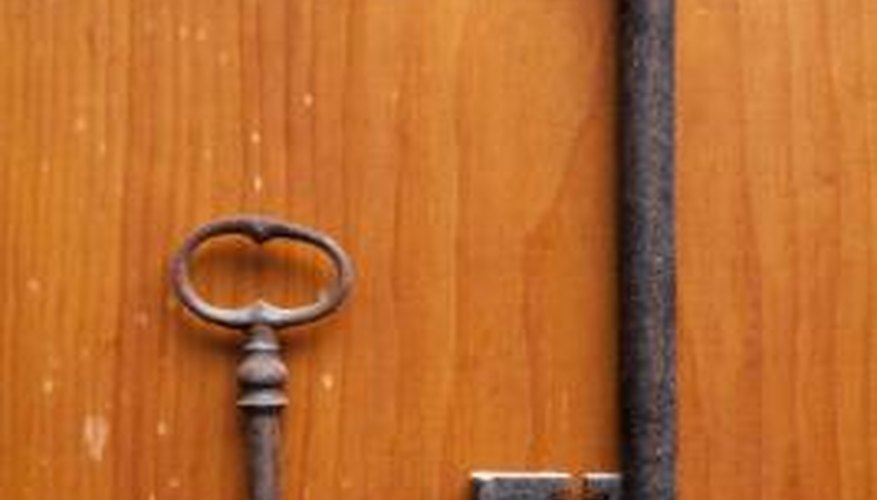Antique keys are found in antique stores, thrift shops and at garage sales. Some people use antique locks within a home, and have the original key or set of keys that go with an antique lock. Identifying these types of keys is generally easy. Aside from the shape, the key itself may appear dull or aged in colour, or more ornate and heavy than modern keys. They may also have no markings, or very distinct marks not used today in modern times, such as symbols or unique hallmarks.
- Antique keys are found in antique stores, thrift shops and at garage sales.
- Aside from the shape, the key itself may appear dull or aged in colour, or more ornate and heavy than modern keys.
Look at the barrel key shape. Barrel keys have a rounded edge and a short shaft. Look at the shaft, or the insertable part of the key. Barrel keys have a hollow shaft, which is obvious when staring into the key on an angle. Feel the key for weight. See if it feels light, or slightly heavy when in the centre of your palm. Barrel keys are lighter than the solid metal of a skeleton key.
Check out the end of a skeleton key. Look for the similar rounded end, the same kind of shape as a barrel key, but see if the shaft of the key is long. Look at the intricacy and the workmanship on the key. Skeleton keys were often highly decorated, with two short grooved teeth or bits at the end part of the key that is inserted into a lock. Make sure the key has a solid shaft, not a hollow shaft like on a barrel key.
- Check out the end of a skeleton key.
- Look for the similar rounded end, the same kind of shape as a barrel key, but see if the shaft of the key is long.
Examine the bow of a skeleton key. The bow is the part of the key that is turned by hand, and it should be decorative in design. Feel the key for weight using the palm of the hand method. A skeleton key will feel a bit heavier than a barrel key. Try different types of locks with a skeleton key. A skeleton key can usually open most antique locks and is known for this function.
Check to see if an antique key is flat. A flat key will not have a rounded edge, and will be completely flat with a long shaft and a number of bits along the shaft part of the key. A flat key may also have a thicker bow than barrel or skeleton keys, with a smaller centre in the middle. A thicker bow is needed to keep the key from breaking on a proper angle while turning, since the shaft is not thick and rounded for support.
Look online at antique key collector websites, or in books at the library with pictures of antique keys, to help you identify antique keys. Always use a magnifying glass when examining antique keys with small markings, especially if the marks are hard to see due to patina on the key.
